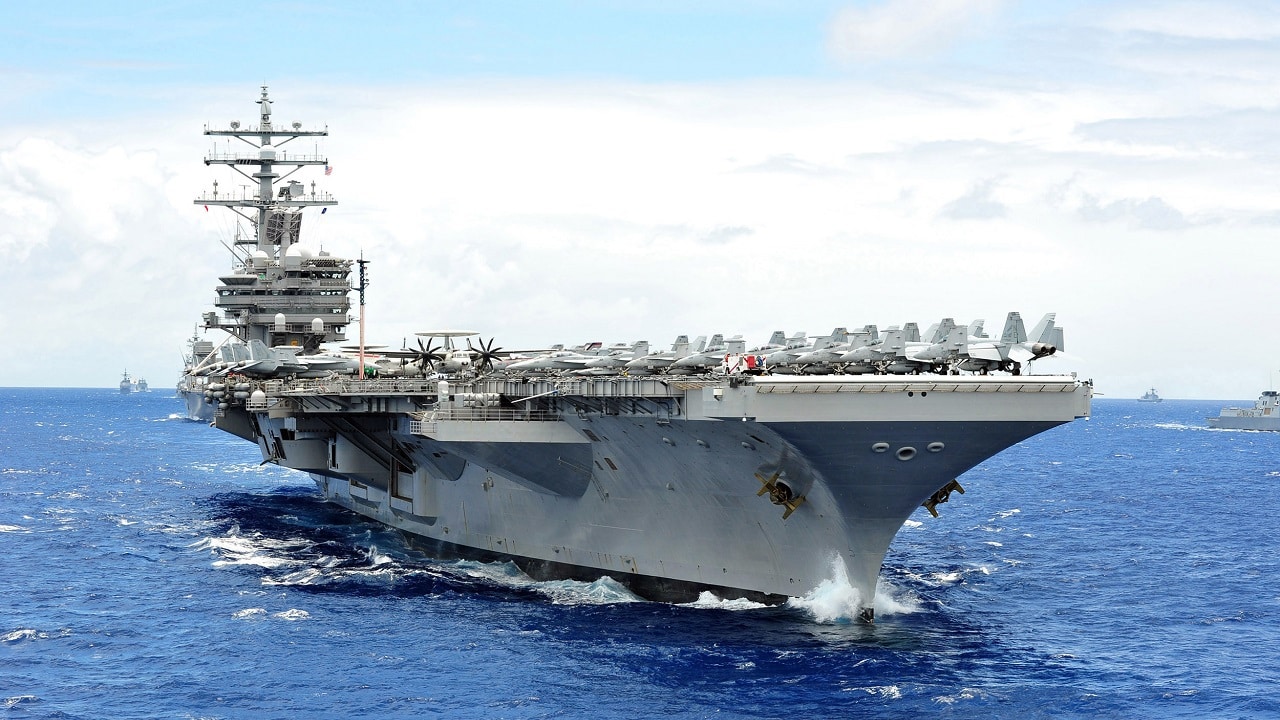History Proves America’s Enemies Can Sink a Navy Aircraft Carrier
The Stealthy Success of HSwMS Gotland

In 2005, a remarkable event unfolded during a joint training exercise involving the Swedish submarine HSwMS Gotland and the U.S. Navy’s Carrier Strike Group 7. The Gotland successfully infiltrated the defenses of this formidable naval group, simulating the sinking of the USS Ronald Reagan, a nuclear-powered aircraft carrier. This exercise, conducted off the coast of California, showcased the submarine’s stealth capabilities and raised significant questions about the effectiveness of anti-submarine warfare strategies employed by the U.S. Navy.
The Gotland’s ability to navigate undetected through the Carrier Strike Group’s defenses was not just a stroke of luck. It was a testament to advanced technology and strategic planning. The submarine managed to capture several photographs of the USS Ronald Reagan, providing undeniable proof of its successful penetration into the heart of the Carrier Strike Group. This incident highlighted the evolving dynamics of naval warfare and the ongoing challenges faced by surface vessels in detecting and countering submarine threats.
How the Gotland Snuck into Carrier Strike Group 7
Carrier Strike Groups are designed to be highly secure, utilizing a combination of surface ships, submarines, and aircraft to create a robust defense system. These groups employ advanced anti-submarine warfare (ASW) capabilities, relying on a network of destroyers, frigates, cruisers, and airborne assets to detect and neutralize underwater threats. Despite this layered defense, the HSwMS Gotland managed to slip through undetected, raising eyebrows within military circles.
U.S Navy and Indian Naval Force Conduct Joint Exercise in the Indian Ocean
The key to the Gotland’s stealth lies in its air-independent propulsion (AIP) system. Unlike traditional diesel-electric submarines, which must surface or use a snorkel to draw in air for their engines, the Gotland operates silently for extended periods underwater. This is made possible by its Stirling AIP system, which allows the submarine to remain submerged for weeks while generating power without the need for surface access. The Stirling engines produce significantly less noise compared to conventional diesel engines, making the Gotland exceptionally difficult to detect.
This stealth capability is crucial in modern naval warfare, where the element of surprise can determine the outcome of engagements. The Gotland’s successful infiltration of Carrier Strike Group 7 serves as a reminder that even the most advanced surface vessels can be vulnerable to well-equipped submarines. The incident prompted a reevaluation of ASW strategies within the U.S. Navy, highlighting the need for continuous improvement in detecting and countering submarine threats.
HSwMS Gotland: Design and Capabilities
The HSwMS Gotland is a part of the Gotland-class submarines, designed and built by Kockums for the Swedish Navy. These submarines were among the first to incorporate an air-independent propulsion system, marking a significant advancement in submarine technology. The AIP system allows the Gotland to operate without surfacing for much longer periods than traditional submarines, enhancing its stealth and operational capabilities.
The design of the Gotland-class submarines emphasizes stealth and maneuverability. The Stirling engines, which utilize liquid oxygen and diesel fuel, produce less noise than conventional diesel engines. This feature further enhances the submarine’s ability to remain undetected while conducting missions. The Gotland is armed with torpedoes capable of engaging both surface ships and other submarines, making it a versatile asset in naval operations.
Despite its smaller size compared to larger American nuclear-powered submarines, the Gotland has distinct advantages in shallower coastal waters. Its design allows it to navigate these environments effectively, where larger submarines may struggle. The combination of advanced technology, stealth capabilities, and strategic design makes the HSwMS Gotland a formidable player in modern naval warfare, capable of challenging even the most advanced surface fleets.
U.S. Navy’s Response and Bilateral Training Agreement
The success of the HSwMS Gotland against the USS Ronald Reagan during the 2005 exercise served as a wake-up call for the U.S. Navy. The incident underscored the need for improved anti-submarine warfare (ASW) capabilities in the face of evolving threats. In response, the U.S. Navy recognized the importance of adapting to new technologies and strategies in order to maintain its maritime superiority.
To enhance its ASW training, the U.S. Navy entered into a bilateral training agreement with Sweden. This agreement involved leasing the HSwMS Gotland and its crew for a two-year training program. The goal was to provide American sailors with realistic training scenarios against a modern AIP submarine. This collaboration aimed to improve the U.S. Navy’s ability to detect and counter submarine threats effectively.
The Gotland-USS Ronald Reagan incident highlighted the ongoing cat-and-mouse game in naval warfare, particularly in anti-submarine operations. While the U.S. Navy boasts a fleet of advanced nuclear-powered submarines, the Swedish technology demonstrated that non-nuclear submarines equipped with AIP systems can pose a significant threat to even the best-protected surface vessels. This realization has prompted a renewed focus on ASW tactics and technologies, ensuring that the U.S. Navy remains prepared for the challenges of modern maritime conflict.
